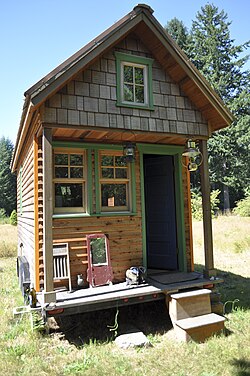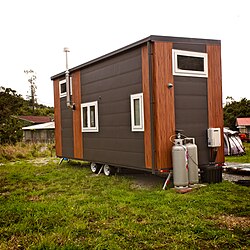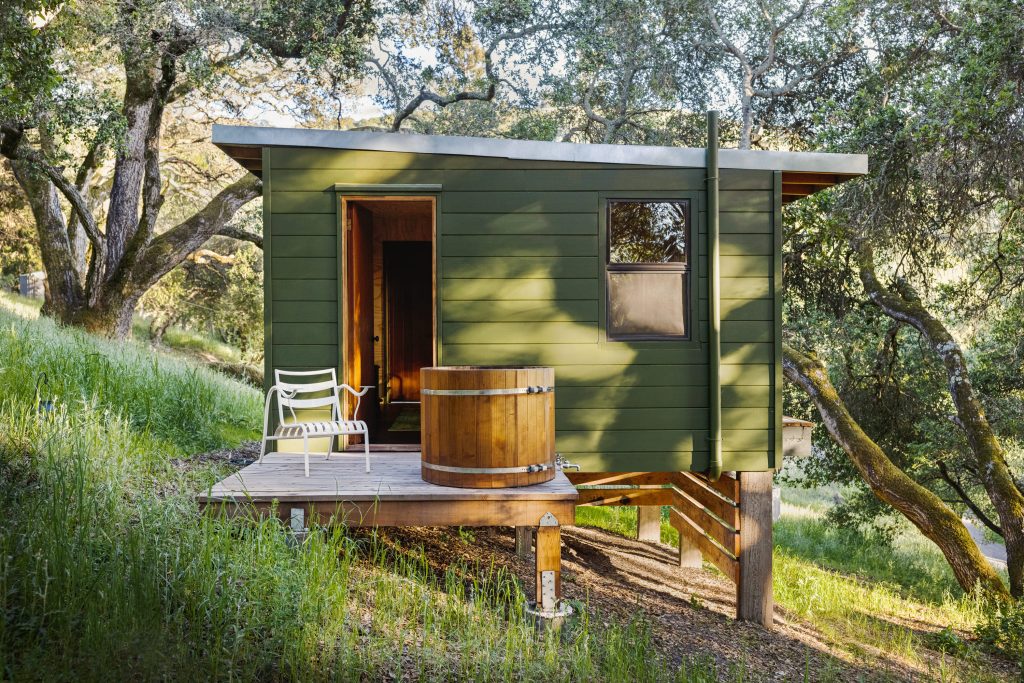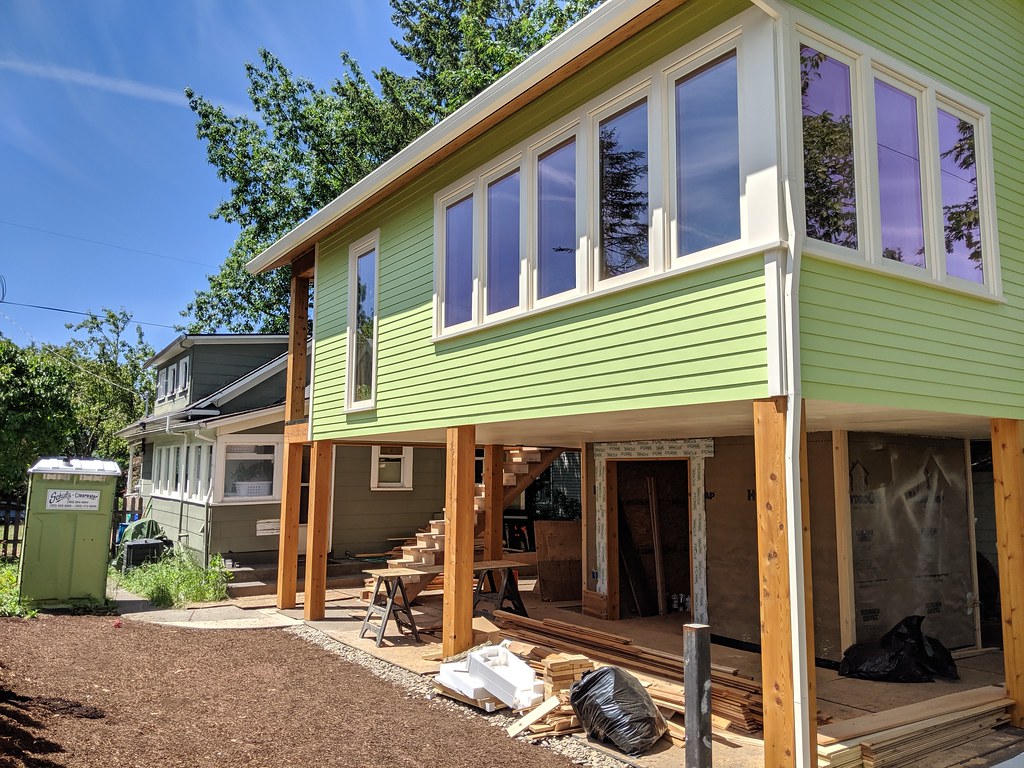
“Reality is that individuals don’t need a damaged service,” Hapi Homes CEO Mary O’Brien said in a recent Business Insider interview. This bold assertion fuels a quiet revolution in housing—a revolution whereby whole houses can be shipped, unfolded, and made ready for habitation in less than a workday. In an era marked by growing housing costs and escalating demand for green, flexible dwelling, foldable mini homes are rapidly appealing to architects, city planners, and sustainability advocates.

Those were the days when prefabricated houses led one to imagine bland, temporary huts. Foldable mini homes of today merge cutting-edge engineering, stylish design, and awe-inspiring flexibility, not just providing one with a roof but introducing a new paradigm for how one views space, mobility, and community. Below are eight breathtaking aspects of these pioneering homes that are transforming the residential construction landscape of the future.

1. Lightning-Speed Construction: Houses Built in Under 8 Hours
One of the most appealing features of Hapi Homes’ foldable houses is their incredible rate of assembly. Through a carefully designed prefabrication process, houses are pre-built in a factory, delivered as small packages, and then fully constructed on-site within a period of less than eight hours. Not only does this reduce on-site labor but also greatly reduces disturbance to neighbourhoods and the environment. The assembly process, Business Insider states, is so streamlined that a crane operator can place the house, and subsequently builders set out the structure and lock it into place a process as streamlined as it is revolutionary. Speed and predictability are no longer amenities but the norm in this new housing era.

2. One-Stop-Shop Service: From Permits to Move-In Ready
Hapi Homes revolutionized the customer experience by offering a comprehensive, turnkey product. The company handles each step of the way, from architectural design and engineering to getting the necessary permits, preparing the site, and construction management. This eliminates the headaches of employing many contractors and struggling with bureaucratic red tape. As O’Brien emphasized, “They want somebody to handle it for them.” What remains is a seamless process from concept to delivery with quality control and customer satisfaction at each level.

3. Adaptive Floor Plans and Tailoring
Choice freedom is the underlying belief of the Hapi Homes culture. With 18 stock floor plans that range from small accessory dwelling units (ADUs) to large two-story residences, customers are free to select a model that suits them or opt for one that can be fully tailored. Sizes vary from under 200 square feet to 6,000 square feet, and costs remain competitive at roughly $79 to $150 per square foot depending on finishes. The same applies to interior design and furnishings, with the choice of having unfurnished or fully furnished structures. Versatility and personalization fuel the foldable home revolution.

4. Engineering for Durability and Sustainability
The materials and techniques used in these homes are as advanced as their building. The light-gauge steel framing used in every unit is termite- and pest-proof, and the aluminum corrugated panels used for exterior cladding are covered with anti-corrosive paints for durability even in the most extreme weather conditions. Aluminum alloy is used for doors and windows, which guarantees long life. As explained by Mohamed Ahmed, CEO and co-founder, the exterior is constructed in a manner that it is especially resilient, so these homes are perfect for disaster response and extreme conditions. Sustainability and resilience blend with reduced waste at construction and smaller environmental footprint compared to traditional construction.

5. Multi-Purpose Design: More than Just a Home
One of the most convincing aspects of foldable homes is their built-in flexibility. As noted by Ahmed, “If somebody returns and says ‘Alright, we wish to use this as housing at the moment,’ and then six months later, ‘We don’t have to house individuals anymore, we wish to turn it into a school or a classroom,’ we are able to then remove the walls in the middle and make the adjustments and turn that into a classroom.” This multi-purposing enables easy adaptation to changing community needs, from emergency shelters to classrooms, clinics, or even offices.

6. ADUs and the Resurgence of Generational Living
Sustainable building practices and accessory dwelling units (ADUs) are central to Hapi Homes’ new product line as the country trends toward multigenerational living and property maximization. The Windsor collection, for instance, consists of studio, one-bedroom, and two-bedroom floorczlen made up of more than 550 to 935 square feet of living area with prices starting at $80,478. O’Brien recognizes that the primary motivations are “generational housing” and creating “extra income on a current property.” ADUs are currently seen as flexible, income-generating assets that are simple to reconfigure to welcoming family members or tenants.

7. Panelized Construction: The Strength and Efficiency Advantage
Collapsible houses like those of Hapi Homes employ panelized construction, which carries certain advantages over traditional modular methods. Panels are assembled in controlled settings, so less waste, greater precision, and improved energy efficiency result. Compared to modular homes, since they are more expensive to ship and not as flexible, panelized systems are easier to transport—even to remote sites and can be quickly assembled. The finished product is a strong, tight building that withstands adverse weather conditions and conserves energy dollars for years to come.

8. Social Impact: Disaster Relief and Community Rebuilding
Foldable houses aren’t just a commodity for infill urbanization or backyard offices they’re making a difference in real life in areas of disaster. Hapi Homes has donated units to Odesa, Ukraine, to aid in missile attack recovery and rapid housing programs in the Caribbean after hurricanes. This humanitarian application demonstrates the broader appeal of foldable houses to provide safe, dignified shelter in crisis situations, making their value as a social resilience solution.

Foldable small homes are more than a fleeting trend they are the culmination of engineering, design, and social innovation. With speed, flexibility, and sustainability in a union, these homes have the potential to not only change how individuals live, but how communities approach change. As the market continues to move forward, foldable homes are a testament to what can happen when creativity is combined with the need for speedy change.

